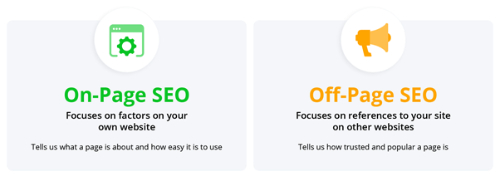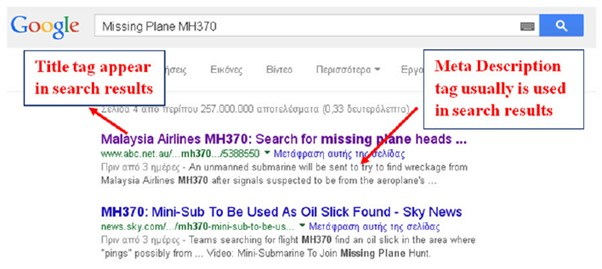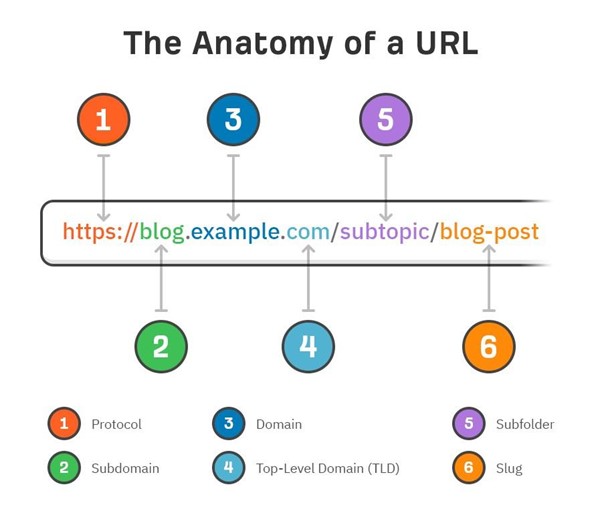On-Page SEO Guide For Beginners
When it comes to ranking higher in search engine results pages (SERPs), SEO onpage optimization is absolutely essential. Although it’s often overshadowed by its more glamorous cousin, off-page SEO, on-page SEO is actually the foundation upon which a strong off-page SEO strategy must be built.
On-page SEO is important for any website that wants to rank high on Google. However, if your website’s on-page SEO game isn’t strong, your off-page SEO efforts are likely to be for naught. This guide will show you everything you need to know to optimize your website for search engines and get it ranking high on Google. So let’s get started!
Onpage vs Offpage SEO
You may be wondering what is the difference between onpage and offpage SEO. Let’s take a closer look.
Onpage SEO refers to all the things that you do on your own website to improve your search engine rankings. This includes things like optimizing your title tags and meta descriptions, improving your content, making sure your site is mobile-friendly, improving your page speed, and more.

Offpage SEO, on the other hand, refers to all the things that you do outside of your website to improve your search engine ranking. This involves activities “behind the scenes” such as building backlinks, social media signals, citations, content syndication, and more.
Why is On-Page Optimization Important?
As we mentioned before, on-page optimization forms the foundation of a strong off-page optimization strategy—but that’s not the only reason why it’s important.
It is important because it helps search engine crawlers understand the content of your website and helps to improve your website’s click-through rate (CTR) from the search engine results pages (SERPs), as well as its overall ranking.
When done correctly, on-page optimization can also help to improve the user experience on your website, making it more likely that visitors will stay on your site and engage with your content.
There are over 200 ranking factors that Google uses to determine which pages should rank first in the SERPs. While some of these factors are off-page (meaning they’re not directly related to the content on your website), the majority are on-page ranking factors.
How To Do On-Page Optimization?
Now that we’ve answered the question “what is on-page SEO?” it’s time to get into how you can actually start to optimize your pages for better SERP placement.
Onpage SEO Factors
There are a number of different factors that go into on-page optimization, but some of the most important include:
- Keyword Research
- Page Content
- Title Tags & Meta Descriptions
- Header Tags
- Internal Links
- Images and Alt Text
- Simple URLs
- Loading Speed
- Mobile Friendly Website
- Site Security (From HTTP to HTTPS)
Choose The Right Keywords
Improve Your Content
Your page’s content is one of the most important factors when it comes to on-page optimization. Your content should be relevant, informative, well-written, and include your target keyword or phrase, but not too many or risk being penalized by Google!
It should also be original and not copied from another source. In addition to improving the quality of your content, you should also add new pages on a regular basis.
A good rule of thumb is to aim for at least one to two new blog posts per month. Not only will this benefit your SEO, it also offers more opportunities to engage with potential customers and build relationships with them over time.
Optimize Your Title Tags and Meta Descriptions
The title tag is one of the most important elements of on-page optimization because it tells both users and search engines what your page is about.
Title tags and meta descriptions are HTML elements. They also appear in the search results, so they’re your opportunity to make a good first impression on potential visitors.

Make sure that your title tags are no longer than 60 characters and that your meta descriptions are no longer than 160 characters. You should include the main keyword or phrase you’re targeting for that page.
Make Relevant Header Tags
Headings and subheadings help to break up your page’s content and make it easier for readers to read. They range from H1 (the most important) to H6. You should include your target keywords or phrases in your headings to help Google understand what your page content is about.
Internal Links
Internal links are links from one page on your website to another. They’re an important part of on-page SEO because they help search engines like Google understand the structure of your website and the relationships between different pages on your site.
They also help SEO by passing link juice (or ranking power) from one page to another. This can help improve the rankings of pages that wouldn’t normally rank as high as they would if they had fewer or no internal links.
Internal links also help to improve the user experience by making it easier for visitors to navigate your website, and keep them on your website longer. The longer someone spends on your website, the more likely they are to convert into a customer. So be sure to add internal links from one page on your website to another.
Image Alt Text
Including images on your pages can help to break up the text and make your page more visually appealing. When adding images, be sure to include relevant alt text that includes your target keyword or phrase. Image alt text is the text that appears when an image doesn’t load properly on a web page. You should include keywords in your image alt text to help Google understand what each image is about. If your image is good enough it might also help you rank on Google. Google images section is also a great way to make your website or pages rank.
Image alt text is the text that appears in place of an image if the image can’t be displayed for some reason.
Simple URLs
One of the best ways to improve your on-page is by using simple and short URLs. This is important because Google likes short and simple URLs, and they are much easier for people to remember than long and complicated URLs.
When creating URLs, be sure to use keywords in the URL slug (the part of the URL after the domain name). This will help Google understand what the page is about. You can also use hyphens (-) to separate different words in the URL slug.

It’s also important to keep your website’s URL structure consistent. This means that you should use the same directory structure for all of your pages, and you should use the same filename structure for all of your images.
By using simple and short URLs, you can improve your on-page and make it easier for people to find and remember your website’s URLs.
Improve Your Website's Loading Speed
The loading speed of your website is another important factor that affects your SEO ranking. In general, Google wants websites to load in under 3 seconds. If your site takes longer than 3 seconds to load, there’s a good chance that potential visitors will get frustrated and leave before they even have a chance to see what you have to offer.
There are a number of things you can do to increase your site’s loading speed, such as optimizing images, using a caching plugin, and reducing the amount of code used on each page.
Mobile Friendly Website
A website that is designed responsively (or mobile-friendly) will have the same codebase no matter what device it’s being viewed on, whether it’s a desktop computer, a tablet, or a smartphone. This is important for on-page SEO because Google now takes into account how mobile-friendly a website is when ranking it in search results.
If your website isn’t currently designed responsively, you should consider redesigning it to make it more mobile-friendly. Not only will this improve the user experience for people visiting your website on a mobile device, but it will also help your website rank higher in Google search results
Secure your Website (From HTTP to HTTPS)
If you haven’t already, you should secure your website by switching from HTTP to HTTPS. This is important for on-page SEO because it tells Google that your website is safe and secure.
You can switch from HTTP to HTTPS by purchasing an SSL certificate and installing it on your web server. There are many different SSL certificates available, so be sure to choose one that meets your needs. Many web hosting companies are now offering free SSL certificates, so be sure to check with your host to see if they offer this service.
Once you have installed the SSL certificate, you need to configure your website to use HTTPS instead of HTTP. This can be done by editing your website’s settings or by adding a redirect rule to your web server’s configuration file.
Once you have configured your website to use HTTPS, you need to update all of your links to use HTTPS instead of HTTP. You can do this by using a link rewriting tool or by editing the code of your website manually. If you’re not sure how to do this, you can contact your web host for assistance.
Conclusion:
On-page optimization is one of the most important aspects of SEO. When done correctly, it can help improve your website’s click-through rate (CTR) from the search engine results pages (SERPs), as well as its overall ranking. We have covered some of the on-page techniques that you can use to improve your website’s SEO. Wish to learn more ?
Check out the video below:
If you’re feeling overwhelmed by all of this information or need help implementing these principles, don’t hesitate to contact our team of SEO experts. We specialize in helping businesses achieve their SEO goals through on-page optimization and would love to help you do the same.
